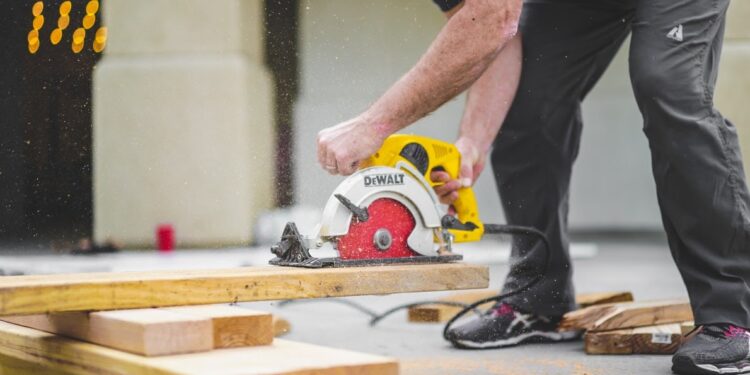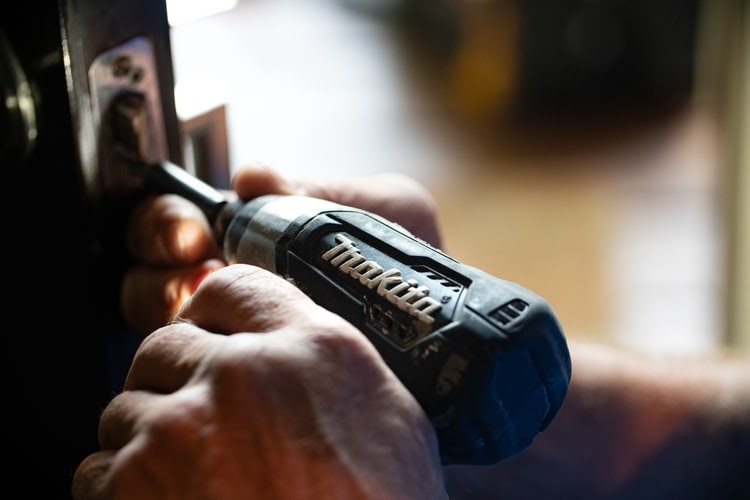More than half of all homeowners wouldn’t attempt to make minor repairs within their household and opt to call in a professional instead. In other words, as people are chasing well-paid dynamic careers and have less time to spend at home, the handyman business emerges as a career that can lead to consistent work and big profits.
A successful handyman business provides a wide variety of home repair services based on their specific skill set and the client’s needs. Handyman services typically include but are not limited to both exterior and interior trade skills, repair, and maintenance. So, if you’re skillful around the house and have a talent for building, fixing, or maintaining minor repairs, you can turn your enthusiasm into a profitable business operation.
Like most trade jobs, many perks can come along with it if you determine to go at it and become a self-employed handyman businessman. These can include picking what jobs you want to do, setting your prices, and choosing your working hours. However, beginning a handyman business isn’t just plain sailing, as self-employment is a big responsibility.
This short guide is dedicated to walking you through the exact steps you need to start a profitable handyman business and set yourself up for success.
Make Sure That You Have The Relevant Licenses And A Business Insurance Plan In Place
In most cases, handymen don’t need a specific license or a permit to run their business in their area. Nevertheless, licenses and permit regulations vary between cities and states in the US, so ensure that you have the proper licenses in place before you start your business so that this administrative obstacle doesn’t restrict your work opportunities. Right from the beginning, make sure that you run a clean handyman business by the book and check with your local authorities about permits and regulations.
Besides, as you’ll have some level of liability on your hands when you’re working inside people’s homes or companies, you want to ensure that the cost of a critical error won’t cost you or your company. For that reason, we advise you to invest in a solid business insurance plan to protect and separate yourself from your handyman business. Do your homework and thoroughly research the Internet to find the best essential coverage for handyman business for less than what your local brick-and-mortar insurance companies offer. Be smart and protect yourself against some of the most frequent claims that can result in expensive legal or medical bills.
Business Name, Incorporation, And Location
It goes without saying that you’ll need a business name for your new business, so make sure to select one that sounds professional and long-lasting. You’ll have to use your name to register your LLC, create your website, email domain, logo, vehicle decals, uniforms, and invoices. A name like Jason the Handyman LTD and a website domain like www.jasonthehandyman.com might come as unprofessional and difficult to type out. For that reason, we advise you to select something short, innovative, and straightforward.
Register your enterprise with your local government by establishing an LLC. Speak to your accountant and your lawyer to figure out what steps you need to take to register your business officially. Bear in mind that this procedure could take up to five weeks or longer to get your business up and running. Lastly, it’s wise to get a business address to incorporate and register. Think about buying or renting a P.O box that will help your business maintain some privacy and make you look like a more professional business right from the start.
Select Your Initial Niche
Right after you’re done with the initial administrative tasks of securing the needed licenses, insurance, and registering your new company, it’s time to focus on your business’s final product—your handyman services.
Conducting thorough research and understanding of what area of handyman work you want to “specialize in” can assist you on your way to beginning your handyman business. The two main divisions of handyman work you may want to go into are domestic or commercial surroundings. Even though these two sectors typically require similar skills, they can differ regarding what work is performed.
Domestic handymen primarily work in private homes or perhaps gardens of their clients. Suppose you feel like you’re better skilled to attend domestic clients exclusively and make minor repairs and maintenance in their homes. In that case, you should organize your business as a domestic-oriented handyman business.
On the other hand, if you feel like domesticated handyman work isn’t the right market for your skillset, you might try the commercial waters instead. This means you will work on-site for a company and, chances are, your handyman services will primarily be focused on the company’s facility and assets.
Purchase The Needed Tools And Equipment
As a newly self-employed handyman, of course, you’ll need to purchase your tools and sets to complete the jobs you accept successfully. Tools and equipment are vital to your profession, so they should be protected against damage and theft with adequate tool insurance.
Nevertheless, hugely depending on what you’ll specialize in, the required tools and equipment can differ, but there are a few staples that you’ll probably need, including toolbox, step ladder, painting supplies, stud finder, circular saw, electric drill, spirit level, tape measure, and perhaps a van.
Select Your Hourly Rate
In case you’re not familiar with how much a handyman can charge, keep in mind that the price can vary quite a lot depending on many factors. These factors include what services you provide, whether you’re working for someone or you’re self-employed, location, and, of course, the experience level. Costs are also dependant on the market and the complexity of the task and can be charged as a flat fee or an hourly rate.
In the US, standard hourly handyman rates are between $60 and $70 for individual workers and around $125 per hour for a handyman who works for a company. Since you’re about to run a handyman company, your starting hourly rates should be somewhere around $100 for an hour of work.
Market Your New Business
In case you’re not familiar with how much a handyman can charge, Once you finish setting up your professional handyman business operation, getting your name out there is the initial step to developing a highly successful business. There are several ways to get maximum visibility for your handyman business, and creating an official website is perhaps the easiest. A website is a fantastic way for people to find you and see real-time examples of your work you can include on your site. Ensure that your name and branding are clear so that they know how to contact you if they like your work.
Moreover, suppose you’re planning on going into domestic work. In that case, you’ll constantly be on the move with your vehicle, so placing your business branding and information on your van and uniform is always a good idea. Also, it can be helpful to utilize social media platforms like Facebook, Instagram, Twitter, etc., to get your name out locally. Social media platforms are easy to use to showcase what your handyman business can do for potential clients.
Final Words
Once you take the six steps mentioned above, you’ll have a solid plan for developing a highly successful handyman business. Obviously, as you’ll be prepared to claim your freedom and start a business—you’ll have a new feeling of excitement and lift in motivation. If you’ve decided to go “all-in” and start your new business operation, remember to take your time and knock out each step one at a time.









